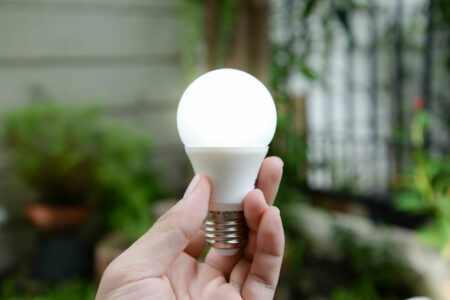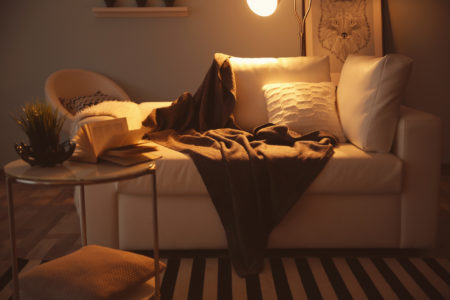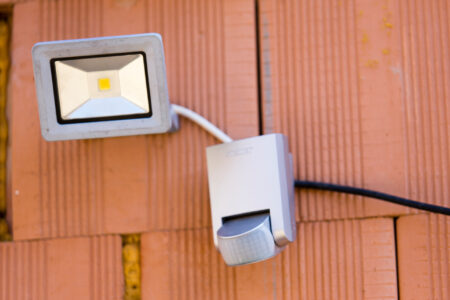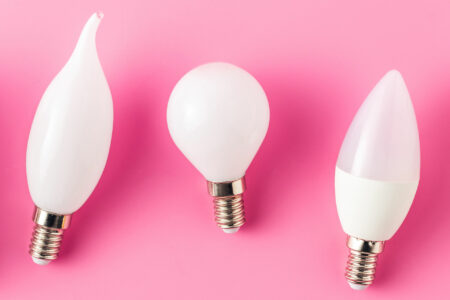Are you planning to add strip LED lights to your room? If so, you’re probably wondering, what’s the best length for LED strips for my room? Look no further for the answer! In today’s post, we’ll tell you all about strip lengths.
The Best LED Strips Length for a Room
LED strips are energy-efficient and relatively cheap. They also come in many lengths and colors. So, it can be a hassle for some people to figure out the length they need for their room.
The length of strip lights mainly depends on the perimeter of your room. That’s in case you’re planning to line up the ceiling or the floor with the strips, which is the simplest way to do this.
On the other hand, if you’re planning to hang the strips around a certain object, like a desk, for example, you’ll simply need the measurements of the desk.
Calculating the LED Strips Lengths According to Room Perimeters
To measure the perimeter of your room, you’ll need to get a tape measure.
Assuming you’re planning to hang the strip around the entire room, measure the length and width of the room. Then, double the total of the measures to find the total perimeter of your room.
If your room has an irregular configuration, you might need to measure the length of every wall. That also applies if your room has any areas sticking out from the wall.
Keep track of all the measurements, and then calculate the entire perimeter of the room.
We highly recommend double-checking the measures before purchasing the LED strips, as it’s better to be safe than sorry.
Calculating the LED Strips Lengths According to Required Lumens
Typically, LED strips are used for decoration, but they can also double as an extra light source. If you intend to use them this way, you might need to calculate the required lumens to select the suitable type and length of the LED strips.
First, you need to measure the length and width of your room. Then, multiply the two values to get the square footage of the room. After that, you’ll need to multiply the square footage of the room by your foot-candle (lumen per square foot) requirement.
Figuring Out the Suitable Standard Length
When shopping for LED strips online and in some storefronts, you’ll find that there are standard lengths that you can choose from. If you’re lucky enough, you’ll find a length that matches your room measurements perfectly.
On the other hand, if you’re unable to find the perfect length, you should always go for a longer one, as you can easily cut off the extra length.
Can I Cut Off a Part of a Long LED Strip?
You can safely cut a part of a light strip or divide it into smaller pieces. Most modern LED strips have cutting lines, which you can find almost every few inches.
They usually have a solid or a dotted line to guide you on where to cut. That’s because this line is where a circuit ends. So, by cutting the strip at this line, you won’t cut the circuit of the LED.
Just to be safe, make sure that it’s not connected to a power source. Then, you can cut the strip using a sharp pair of scissors.
Can I Connect Multiple Short Strips?
Absolutely! Whether you bought a short strip by accident or have a tricky figure that you need to decorate, you might need to connect multiple strips together.
Luckily, the process isn’t complicated. In fact, you can connect LED strips from different brands together. However, they must have the same voltage.
Additionally, in case you’re connecting RGB strips together, make sure that the four pins align together.
There are two ways you can connect LED strips together: by using a connector or by soldering the strips.
Connectors
You can find strip light connectors online and in storefronts. They come in different shapes and styles to fit almost any project. They’re also pretty easy to use.
You only need to open the connector, attach the LED strip, and close the connector again.
Soldering
You can solder the copper pads of the strips to connect them. However, soldering might need some special tools and experience, so we don’t recommend this technique to beginners.
Despite being a little more complicated than using connectors, it’s more reliable and efficient.
What’s the Longest LED Strip I Can Buy?
Unfortunately, there are some limitations to how long a continuous strip can go. Generally, the voltage level is the main aspect that controls the maximum length of the LED strip. Additionally, the type of the strip can also affect the maximum length.
Here are some LED strips examples and their maximum runs:
- 120v LED strips can run continuously up to 164ft.
- 12v DC LED strips can run continuously up to 16ft.
- 24V DC LED strips can run continuously up to 32ft.
- 24V Constant Current strips can run continuously up to 64ft.
- 24 RGB and RGBW can run continuously up to 23ft.
- 24 RGBCC and RGBWCC can run continuously up to 50ft.
Do Longer LED Strips Require More Power?
Yes! The longer the strip is, the more power it’s likely to consume. In fact, the length of the strip is one of the main aspects that you should consider when choosing a power supply for the strip.
How to Choose the Right Power Supply for a Strip
You can take the length of your strip and multiply it by the watts consumed per foot. That’ll tell you how much power the strip typically consumes.
Then, multiply the results by 1.2. That’s simply adding 20% extra wattage for safety to prevent overheating and damaging the power supply. After that, you’ll have the minimum-sized power supply you need to get.
Ideally, you need to get a power supply that has a wattage rating higher than the resulting number.
For example, let’s assume you have a 20ft strip that consumes 3.5 watts per foot:
- 20 x 3.5 = 70 wattage
- 70 x 1.2 = 84 wattage
So, you’ll need to find a power supply that’s at least 84 watts.






